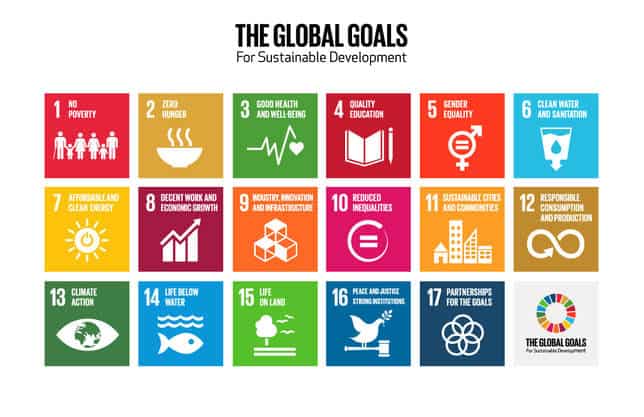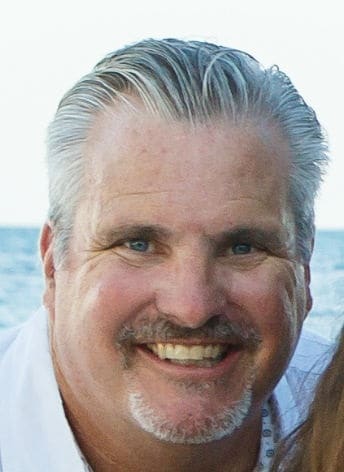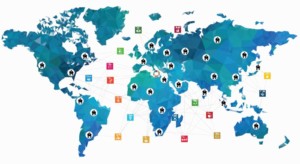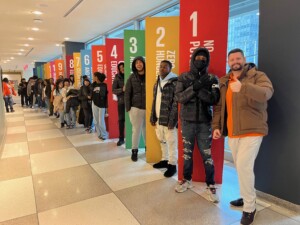The United Nations’ Sustainable Development Goals Could Be Our Standards

For those that are continually advocating for a complete redesign of our education system, there are many potential areas of focus. Some are now suggesting that standards—what many cling to as foundational—may be the last bastion of a dying educational ecosystem.
Voices of A Learning World
Earlier this year, there seemed to be a tipping point on the horizon that spelled something beyond standards and standardized assessments. Indeed, PBLGlobal’s Thom Markham—along with 17 other international educational thought leaders— launched Voices Of A Learning World. They advocate, among other things, that our standards are the problem. Their focus is to support project-based approaches and wellbeing as key elements of an emerging learning system that they foresee overtaking industrial models of teaching. And they think instead of institutional arms creating the standards, that rather students, families, and community should ascertain the appropriate learning goals and accompanying practices.
Ditch The Standards
One of these international thought leaders—Nicholas Martino—is an American national now based out of Mexico. Martino is known for his work with the Authentic Learning Lab and Think Global School among others. He is advocating that we could use the United Nations 17 Sustainable Development Goals as a framework for teaching and learning.
The goals—which were established in 2015 and are intended to be met in 2030—are broad, overarching, relevant, and ambitious global topics such as poverty, food security, health and wellness, sustainability, equity, climate, and peace. “Each of the goals has a number of targets. It’s like a matrix of standards or learning goals,” said Martino.
Martino says that the United Nations has essentially done much of the work—such as the research and data collection. “I can’t find anything that doesn’t fit into the goals.
Martino explains that Goals 1-16 provide the content that any learning entity would need, while Goal 17 provides the challenge. Goal 17 states: “Strengthen the means of implementation and revitalize the global partnership for sustainable development.” Martino explains that Goal 17 is really about all of us getting involved with organizations and partners and going public with our work in these areas.
Although the current 10-year timeline remainder may make them seem lofty, Martino argues that they are perfectly designed for learners of all ages and types to engage in and work towards making things better across the world.
“Most curriculum is about things that have already happened. The SDGs are challenging education to address the future,” said Martino. “They are project-based, inter-disciplinary, and relevant to all.”
SDGs, SEL and the Why
The intent behind social-emotional learning is not just about awareness for teachers, or certainly turning to some packaged unit of students, according to Martino. He said if we think we need to establish Maslo before Bloom—a popular expression in education circles to communicate how humans need their basic needs met before academics can be fully embraced—then the SDGs are what is designed to be before both. Martino believes that the SDGs can serve as the ultimate why.
Martino said this approach is not necessarily even new. He refers to John Dewey who advocated not only for active learning and metacognition, but about citizen education.
“We’ve moved so far from citizenship. We’ve forgotten that education is about creating active, informed citizens who are good people—Creating an active citizen,” said Martino. “The SDG’s fulfill that goal too. It’s an active way to become a participatory citizen.”
Others concur with Martino. TeachSDGs Co-Founder Dr. Jennifer Williams believes that the Sustainable Development Goals provide a roadmap for educators looking for ways to take action for the planet and its people through inquiry and collaboration.
“With the 17 Goals, there is a place for everyone,” said Williams. “There are opportunities for teachers and students from any content area, any grade level, and any location to jump in and get right to work.”
Think ‘Glocally’
Those working in the areas of service and project-based learning have long talked about the phenomenon of addressing global challenges locally. That birthed the phrase “Think Global, Act Local.’ This has now morphed in the business and education worlds into the ‘Glocal’ or “Glocally.’ This is really the concept of local educators and learners consulting global resources, such as the UN’s 17 SDGs, and adapting them to impact their local communities.
Martino said that the SDGs provide us the global perspective and collective action needed, while one doesn’t need to look too far to see the same challenges in our local communities.
“Sadly, far too many of our local communities are struggling right before our eyes with poverty, food insecurity, climate issues, sustainability, mental health issues, inequity, injustice, and more,” said Martino. “For students, this is an important process to realize that these are global problems, as well as local problems.”
#TeachSDGs
Martino is not alone in advocating for the SDG Framework. Indeed, there is an entire international movement—Teach SDGs, Moving Worlds and the United Nations themselves—organizing around these 17 goals. There are schools, networks and even individual educators and learners adopting these as their new operating standards.
Ultimately, this pivot to the SDGs is what many are looking for in redesigning what teaching and learning look like.
Williams believes that we in a moment of action in education
“This is about action in the form of acceleration of use of technology and innovative teaching practices, action in the form of student activism and student voice, and action for social good as teachers and students come together as co-learners in classrooms across the world,” said Williams. “#TeachSDGs has become a movement, but also a community of educators committed to making a difference in the world through teaching and learning.”
“Our world needs as many as possible working on solving our problems. The SDGs represent the real work the entire world has to do,” said Martino. “I really believe that education can change the world—not passively but actively. But first, we need to change education.”
For more, see:
- Is the End of Standards-Based Teaching Near?
- Empowering Youth to Address Real-World Problems
- 24 Goals to Save the Planet (+1 in Case We Don’t)
Stay in-the-know with innovations in learning by signing up for the weekly Smart Update.







REBECCA AMIS
We began doing this in 2018 at MUSE School in Calabasas, CA. We developed our own curriculum around it.